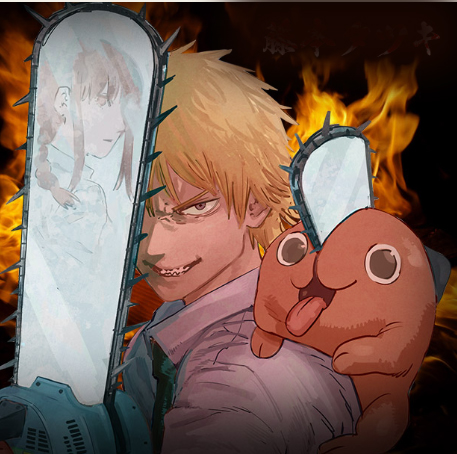# Exploring the Stark Contrast: Tone Shift in Chainsaw Man Parts 1 & 2!
##
Introduction: A Journey into the Chainsaw World
Chainsaw Man has taken the manga world by storm, captivating readers with its exhilarating blend of horror, action, and dark humor. With its first part showcasing a gritty, nihilistic approach to life as a devil hunter, the series sets a tone that is both chilling and exhilarating. Yet, as we dive into Part 2, a remarkable shift occurs; the narrative takes a brighter, more hopeful turn. This essay will explore the stark contrast between these two parts, examining how this tonal shift influences character development, themes, and the overall reading experience. So, buckle up as we rev up the chainsaw and embark on this thrilling exploration!
Chainsaw Man’s universe is rich with intricacies that draw readers in like moths to a flame! From the first page, we’re immersed in a riveting tale that balances the grotesque with the absurd. The vibrancy of the characters and their struggles is palpable, making each twist and turn feel all the more real. As we peel back the layers of this chaotic world, we find ourselves on an emotional rollercoaster that both terrifies and exhilarates!
But it’s not just the action that keeps us hooked; it’s the exploration of deeper themes that resonate with our own experiences. The transition from the raw darkness of Part 1 to the uplifting vibe of Part 2 speaks to our resilience and the capacity for change. As we venture through this essay, let’s celebrate the beauty of growth and hope, acknowledging how characters like Denji inspire us to confront our fears and chase our dreams with unwavering determination!
##
The Gritty Realities of Part 1
In Part 1 of Chainsaw Man, we are introduced to a world drenched in despair and brutality. The protagonist, Denji, is a young man who struggles with poverty and the burden of debts, epitomizing the harsh realities of existence. His life takes a drastic turn when he merges with his pet devil, Pochita, transforming into Chainsaw Man. The tone here is dark and unforgiving, reflecting a society where devils manifest people’s fears and the struggle for survival is paramount.
The visceral imagery and intense battles serve to underscore the characters’ desperation. Each confrontation with the devils is not just a physical battle but a representation of their internal struggles and fears. Denji’s journey is filled with loss and sacrifice, showcasing how the characters grapple with their demons—both literal and metaphorical. This portrayal resonates with readers on a profound level, drawing them into a world where hope seems elusive, yet the characters persist against all odds.
Amidst the grim atmosphere, there is a nuanced layer of humor that emerges from Denji’s absurd circumstances. His naive desires for a better life, coupled with darkly comedic moments, provide a breath of fresh air. This blend of humor and horror creates a dynamic reading experience that keeps us invested in the story. As readers, we find ourselves rooting for Denji, even when the world around him appears bleak, reminding us that even in darkness, laughter can be a beacon of light!
##
The Emergence of Hope in Part 2
As we transition into Part 2, a remarkable tonal shift occurs. The series introduces new characters and challenges that breathe life into the narrative. The once-dominant themes of despair begin to give way to friendship, camaraderie, and the pursuit of dreams. Denji, now more seasoned and aware of his own desires, embarks on a journey towards self-actualization, breaking free from the chains of his past.
This shift is not merely superficial; it reflects a deeper message about resilience and the human spirit. Denji’s interactions with new allies showcase the importance of connection and support. Characters like Asa Mitaka bring a fresh perspective, highlighting the power of friendship and shared goals. The lighthearted moments interspersed with the action create a sense of balance, inviting readers to embrace the idea that hope can flourish even in the darkest of times.
Moreover, the art style evolves alongside the narrative. The bright colors and dynamic panels in Part 2 contrast sharply with the muted tones of Part 1, symbolizing a new beginning. This visual transformation enhances the emotional impact of the story, allowing readers to experience the shift not just through the plot, but also through the vibrant artwork. It’s a celebration of life and growth, reminding us that change is not only possible but also essential for our journey.
##
Thematic Evolution: From Survival to Self-Discovery
The thematic evolution between the two parts is a fascinating aspect of Chainsaw Man. In Part 1, the primary focus is on survival—Denji’s desperate quest for a better life drives the narrative forward. The harsh realities of the world weigh heavily on every character, and their motivations are often rooted in basic needs and survival instincts. This sense of urgency creates a relentless pace, keeping readers on the edge of their seats.
In contrast, Part 2 shifts the emphasis toward self-discovery and personal growth. Denji is no longer just a survivor; he is a character in pursuit of his dreams and aspirations. This transformation opens up new avenues for character development, as Denji grapples with his identity and desires. The themes of friendship and belonging come to the forefront, showcasing the importance of personal connections in overcoming adversity.
As readers, we are reminded that life is not solely about surviving but thriving. The journey from the darkness of despair to the light of self-discovery is beautifully articulated, encouraging us to reflect on our own lives. It’s a powerful reminder that, no matter how grim our circumstances may seem, there’s always a path toward understanding ourselves and our place in the world.
##
Character Development: Growth Amidst Chaos
The character development in Chainsaw Man is one of its most captivating aspects, especially when contrasting Parts 1 and 2. In the first part, Denji is a reflection of his chaotic environment—a young man driven by basic desires, often making impulsive decisions that lead to dire consequences. His growth is stunted by the harsh realities he faces, making him appear almost like a pawn in a larger game of survival.
However, as Part 2 unfolds, we witness Denji evolve into a more rounded character. He begins to confront his own motivations and desires with a newfound sense of agency. This shift allows him to develop meaningful relationships that contribute to his growth. Characters like Asa Mitaka not only challenge Denji’s worldview but also inspire him to pursue his dreams, fostering an atmosphere of support and encouragement.
The growth of other characters is equally compelling. Supporting characters gain depth and complexity, moving beyond their initial archetypes. They become integral to the narrative, contributing to the overarching themes of resilience and hope. As Denji learns to navigate these relationships, readers are taken on a journey that encapsulates the essence of human experience: that through chaos and uncertainty, we can find strength in connection and grow into our best selves.
As we reflect on the transformative journey of Chainsaw Man, let us remember: no matter how tough things get, there’s always room for growth, laughter, and love. Embrace your challenges and strive toward your dreams, for every step you take is a testament to your strength and resilience. Keep chasing your aspirations, and remember, you are never alone in your journey—there’s always hope on the horizon!

